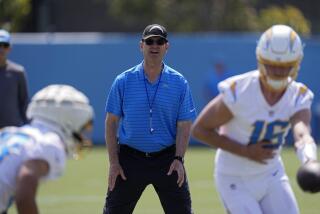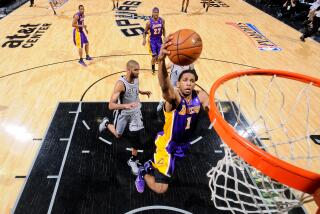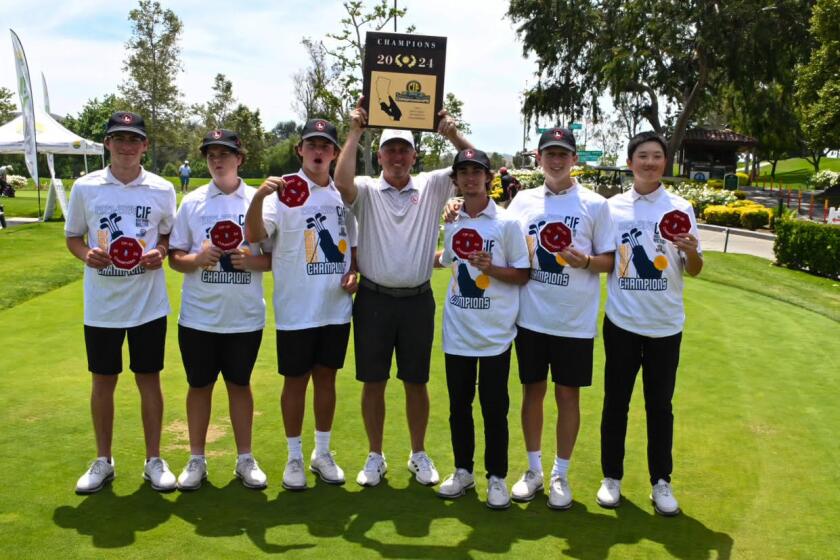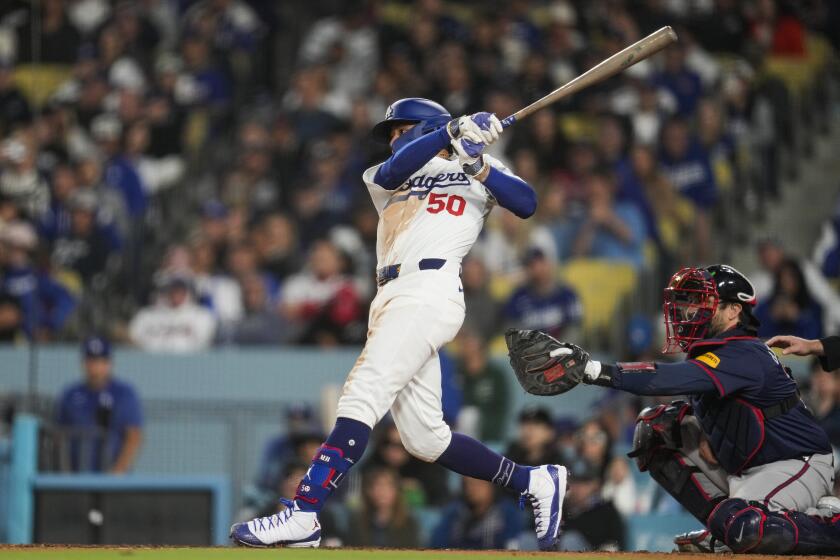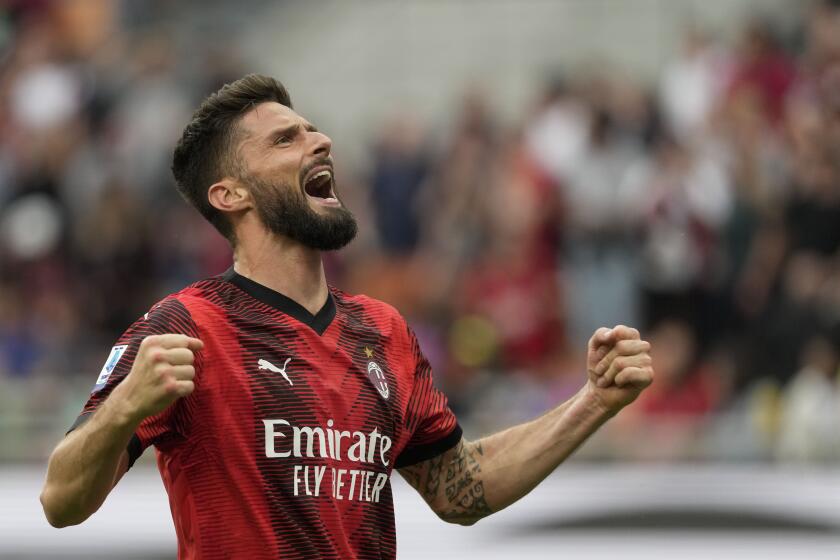ESPN’s ‘June 17, 1994’ recalls a fateful day in sports
“June 17, 1994” is Brett Morgen’s tone-poem documentary about a day in the life of American sports and heroes of sport. It was the day that Arnold Palmer played his final, fraught round at a U.S. Open, the day the World Cup began in Chicago, that the New York Rangers got a ticker-tape parade for winning the Stanley Cup, that the Knicks and the Rockets played the fifth game of the NBA finals. Most famously, it was the day that, with former teammate Al Cowlings at the wheel, O.J. Simpson, charged with the murder of ex-wife Nicole Brown Simpson and her friend Ronald Goldman, took his slow ride around the freeways of Southern California in a white Ford Bronco, holding a gun to his head.
The film, which premieres Wednesday as part of ESPN’s anthology series “30 for 30,” is made entirely of archival news footage, some of it in raw, unmediated form, never meant to be seen; there are no talking heads, no present perspective apart from a few final title cards briefly sketching subsequent events. We go into the relative past, to glimpse a young Simpson and Palmer in the full flush of their powers and fame, but time within the film ends with the end of that eponymous Friday. There is no backward look, no summing up, no thoughts recollected in tranquility or continuing anger, only the emotion of the moment. We know no more than what was publicly known by the end of that day. There is no Kato Kaelin here, no Johnny Cochran. The Knicks still might win the championship.
Morgen (whose credits include the Oscar-nominated 1999 boxing documentary, “On the Ropes,” the 2002 Robert Evans biography “ The Kid Stays in the Picture” and Sundance Channel’s wonderful high-school basketball series “Nimrod Nation”) juxtaposes the events of that day in a kind of associative round robin, finding points of contrast and commonality, of similar action and visual consonance, on which to turn his film. But he offers no other, more remote perspective; this is not a summing up of events, but rather a meditation, of an elemental sort, not just on sports but on the way of the world.
I can’t swear that this is what the director had in mind, but these are the sorts of things I thought about while watching his film and afterward: time — the blank future, the fatal moment, the irretrievable past. How life is made into ceremony, the public intersects with the private, and men turn into myths and back into men again, as Simpson’s suicide ride becomes itself a kind of spectator sport, with fans and sensation-seekers lining the streets and freeway bridges, while Palmer’s last round, though fraught with bad shots, becomes a loving communion of athlete and crowd.
It is also, on an even more elemental level — as an object that itself physically exists in time — about shapes moving through space, about chaos and patterns, the random and the formal, seen up close and from high above: bodies on a basketball court, crowds on a golf-course, the unpredictable line of a quarterback cutting through his opposition, the stately procession of a white SUV leading a fleet of police cars down a Southern California freeway.
More to Read
Get our high school sports newsletter
Prep Rally is devoted to the SoCal high school sports experience, bringing you scores, stories and a behind-the-scenes look at what makes prep sports so popular.
You may occasionally receive promotional content from the Los Angeles Times.
